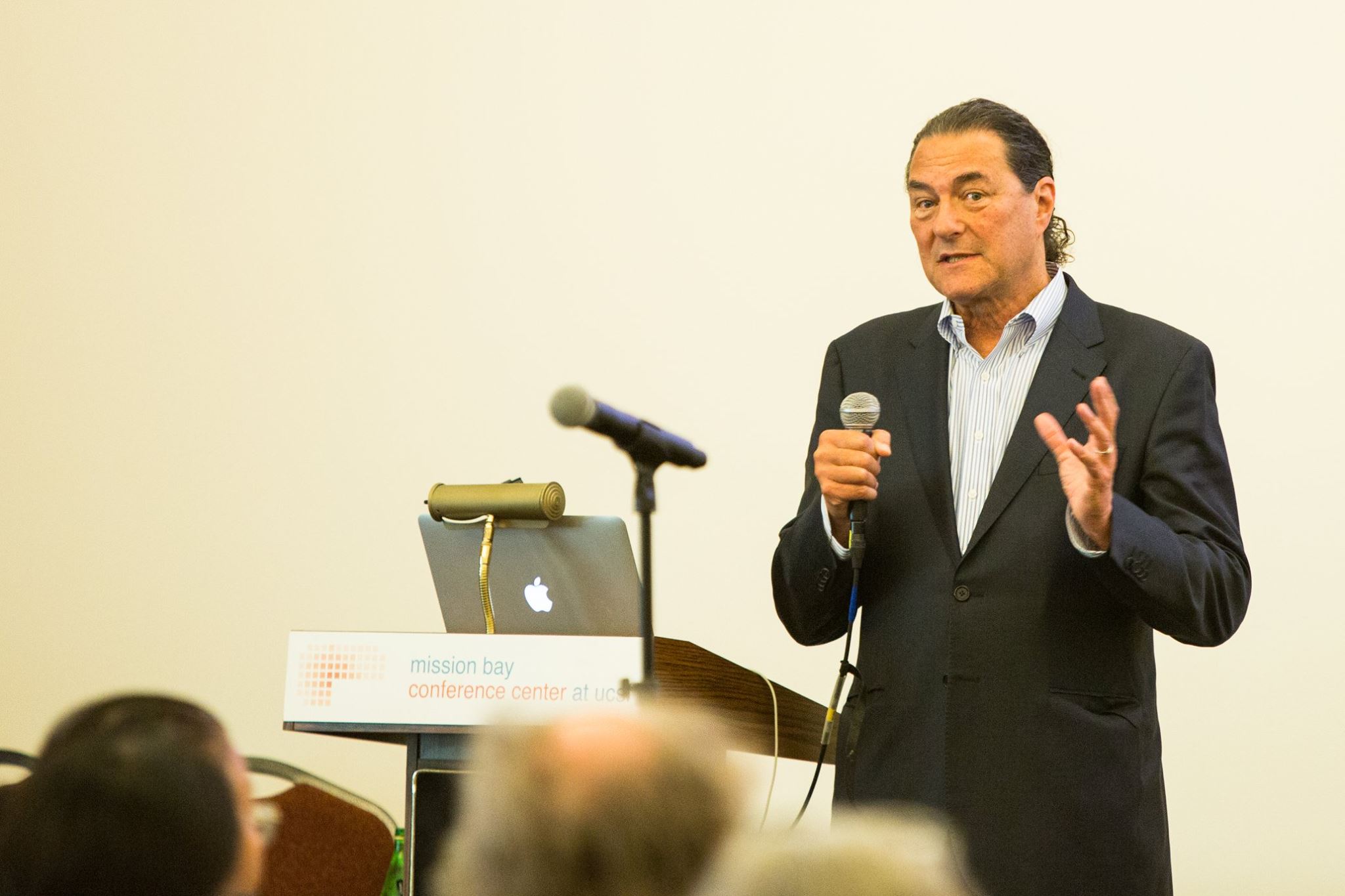An Evening with Experts of Alzheimer's Disease Assessment and Research

At a recent dinner and symposium held at UCSF Mission Bay Conference Center, Elizabeth Edgerly, chief program officer of the Northern California and Northern Nevada chapter of the Alzheimer’s Association, summed up in stark terms one of today’s largest health challenges: “More than half of the people with Alzheimer’s disease are never even diagnosed.” There are two obstacles to diagnosis, she said: cost and the accuracy of available diagnostic tools.
The evening, featuring presentations by a multidisciplinary UCSF team, was hosted by the Society of Nuclear Medicine and Molecular Imaging. It addressed amyloid PET imaging, a diagnostic technique that determines whether patients with memory complaints have amyloid plaques in the brain, an indicator of Alzheimer’s disease. More than 100 Bay Area guests, including physicians and researchers, attended the event to learn about what amyloid PET is, how it works, and how a new initiative, the Imaging Dementia-Evidence for Amyloid Scanning (IDEAS) Study, can help their Medicare patients.

Dr. Edgerly introduced three UCSF physician-researchers: Michael Weiner, MD, and Miguel Hernandez Pampaloni, MD, PhD, from the UCSF Department of Radiology and Biomedical Imaging; and Gil Rabinovici, MD, of the UCSF Department of Neurology.
Dr. Weiner is the principal investigator in the largest observational study on Alzheimer’s in the world, the Alzheimer’s Disease Neuroimaging Initiative (ADNI) at UCSF. That background has given him a broad view of the history of using imaging to diagnose Alzheimer’s. “In medicine, we always begin with clinical diagnosis. In previous years, we’ve relied on many biomarkers,” explained Dr. Weiner. “Amyloid PET imaging has had a paradigm-shifting effect on our field. With tools like this, we can feel vastly more confident in our approach to patients.”
Dr. Pampaloni is a world-renowned authority on PET imaging. He explained to the audience how PET, which shows abnormalities at a cellular level, is particularly well suited to finding amyloid plaques. He also discussed other imaging approaches for diagnosing Alzheimer’s and their differences from amyloid PET.
Dr. Rabinovici is a behavioral neurologist at the UCSF Memory and Aging Center, and directs a leading research program focused on PET imaging in Alzheimer’s disease and other dementias. He serves as study chair of the IDEAS Study, the goal of which is to determine whether amyloid PET scans are clinically useful.
The IDEAS Study is a collaborative study between Medicare, the Alzheimer’s Association, the American College of Radiology, academic researchers, and industry sponsors. One significant obstacle to wide use of amyloid PET scanning is its cost, along with the fact that neither private insurance nor Medicare currently pays for it. The IDEAS Study will provide Medicare-covered scans for 18,500 beneficiaries in order to determine whether amyloid PET can help guide patient management and improve patient-oriented outcomes. It is expected to be the largest clinical trial ever conducted in Alzheimer’s and related disorders to date.
 For the primary care physicians, internists, psychiatrists, and neurologists who attended the symposium, Dr. Rabinovici emphasized the importance of a thorough clinical evaluation in deciding whether amyloid PET would be useful for a patient and interpreting the results of the scan. To be eligible to participate in the IDEAS Study, referring doctors must be specialists in dementia care, and patients must have objectively confirmed cognitive impairment without a clear diagnosis after a comprehensive evaluation by a dementia expert.
For the primary care physicians, internists, psychiatrists, and neurologists who attended the symposium, Dr. Rabinovici emphasized the importance of a thorough clinical evaluation in deciding whether amyloid PET would be useful for a patient and interpreting the results of the scan. To be eligible to participate in the IDEAS Study, referring doctors must be specialists in dementia care, and patients must have objectively confirmed cognitive impairment without a clear diagnosis after a comprehensive evaluation by a dementia expert.
To learn more about the multidisciplinary neurocognitive clinical evaluations and ongoing research projects and clinical trials at the UCSF Memory & Aging Center please click here.
To learn more about the IDEAS Study please click here or go to ideas-study.org.
